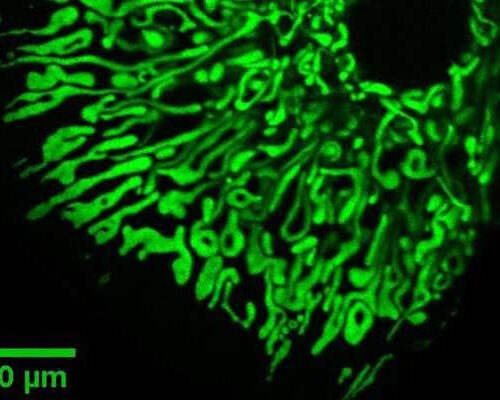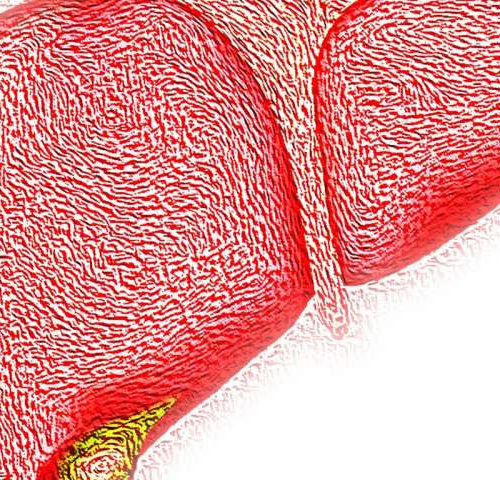by Osaka University Thrombospondin 2 is a new diagnostic and prognostic serum biomarker in NAFLD. Credit: Osaka University Nonalcoholic fatty liver disease (NAFLD) is the most common liver disease worldwide and can progress to liver cirrhosis, liver failure, or cancer. Currently, nonalcoholic steatohepatitis (NASH) diagnosis requires an invasive liver biopsy which can lead to procedural complications....
Tag: <span>fatty liver disease</span>
Immune cells promote proinflammatory fatty liver disease
GERMAN CANCER RESEARCH CENTER (DEUTSCHES KREBSFORSCHUNGSZENTRUM, DKFZ) A particular type of dendritic cell is responsible for the tissue damage that occurs in non-alcoholic steatohepatits (NASH) in mice and humans. The dendritic cells cause aggressive, proinflammatory behavior in T cells, as now discovered by researchers from the German Cancer Research Center (DKFZ) in collaboration with colleagues...
Blocking a protein in liver cells protects against insulin resistance, fatty liver disease
by University of California, Los Angeles Mitochondria inside liver cells (hepatocytes). Credit: Mayuko Segawa, Liesa lab at UCLA Health A new multi-institution study led by a team of researchers at the David Geffen School of Medicine demonstrated that blocking a protein called ABCB10 in liver cells protects against high blood sugar and fatty liver disease in obese mice....
In non-alcoholic fatty liver disease, regimented exercise has beneficial effects on the liver that are unrelated to weight loss
UNIVERSITY OF TSUKUBA IMAGE: Researchers at the University of Tsukuba have shown that an exercise regimen reduces liver steatosis and stiffness in patients with non-alcoholic fatty liver disease. These gains in hepatic health are mediated through modification of inter-organ cross-talk, circulatory organokine alterations and reductions in inflammation and oxidative stress. Because these benefits are unrelated...
In liver, a stressed cell can be bad news for its neighbors
HARVARD T.H. CHAN SCHOOL OF PUBLIC HEALTH A key protein in the communication channels between cells can allow a stress response in one liver cell to spread to neighboring liver cells in mice, causing otherwise healthy cells to become dysfunctional, according to new research co-led by Harvard T.H. Chan School of Public Health and Sheba...
Study: gut hormones’ regulation of fat production abnormal in obesity, fatty liver disease
UNIVERSITY OF ILLINOIS AT URBANA-CHAMPAIGN, NEWS BUREAU CHAMPAIGN, Ill. — Gut hormones play an important role in regulating fat production in the body. One key hormone, released a few hours after eating, turns off fat production by regulating gene expression in the liver, but this regulation is abnormal in obesity, researchers at the University of...
Non-Alcoholic Fatty Liver Disease as the Marker of a Lifestyle that Shortens Life Span
If you are overweight, then you will suffer a faster pace of aging, more age-related disease, greater lifetime medical costs, and an earlier death. The more excess weight and the longer that weight is held, the worse the outcome. In at least one sense, being overweight literally accelerates aging, increasing the pace at which harmful senescent cells accumulate in...
Excessive fructose consumption may cause a leaky gut, leading to fatty liver disease
by University of California – San Diego Excessive consumption of fructose—a sweetener ubiquitous in the American diet—can result in non-alcoholic fatty liver disease (NAFLD), which is comparably abundant in the United States. But contrary to previous understanding, researchers at University of California San Diego School of Medicine report that fructose only adversely affects the liver after...
Oat and rye bran fibres alter gut microbiota, reducing weight gain and hepatic inflammation
In a newly published experimental study, the consumption of dietary fibre from oat and rye brans supported the growth of beneficial gut microbiota, which in turn ameliorated cholesterol metabolism, enhanced gut barrier function and reduced hepatic inflammation. In addition, diets enriched with oat or rye bran were shown to attenuate weight gain. The effects of...
Study discovers BAM15 as a potential treatment for obesity
by Pennington Biomedical Research Center A new study offers the first evidence that a protein named BAM15 acts as an energy uncoupler and could be an effective drug for treating obesity and related diseases. Obesity affects more than 650 million people worldwide and drives a number of dangerous health conditions, including type 2 diabetes, heart...






